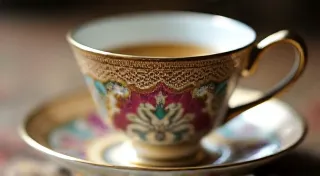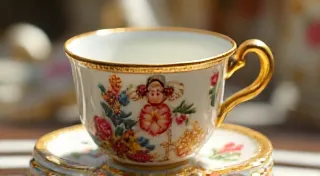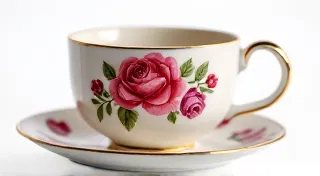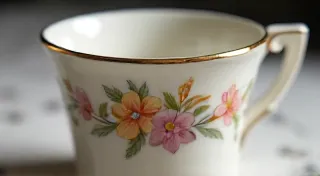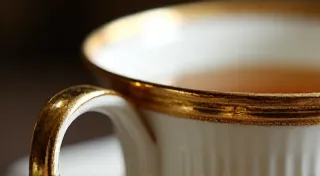How to Care for Your Antique Tea Cups
Antique tea cups are delicate treasures, steeped in history and often quite valuable. Proper care is essential to preserve their beauty and prevent damage, ensuring they remain cherished heirlooms for generations to come. This guide offers practical tips and advice on cleaning and storing your antique tea cups.
Understanding Your Tea Cup's Materials
Before you begin any cleaning or care routine, it's crucial to identify what your tea cup is made of. Common materials include bone china, porcelain, earthenware, and stoneware. Each material requires slightly different handling, and understanding the nuances between them can significantly impact how you care for your collection. For a deeper dive into the distinctions, particularly when you’re deciding between bone china vs. porcelain, read on.
- Bone China: Known for its translucency and strength, bone china is a particularly desirable material for antique tea cups. It’s relatively delicate but more resilient than some other types of china.
- Porcelain: Porcelain is also quite durable but can be more prone to chipping than bone china. The manufacturing process and firing temperatures influence its durability, which is why careful handling is always important.
- Earthenware: This is a more porous and less durable material, often brightly colored and glazed. Its porous nature means it's more susceptible to staining.
- Stoneware: Generally quite sturdy, stoneware is often thicker than other types of china.
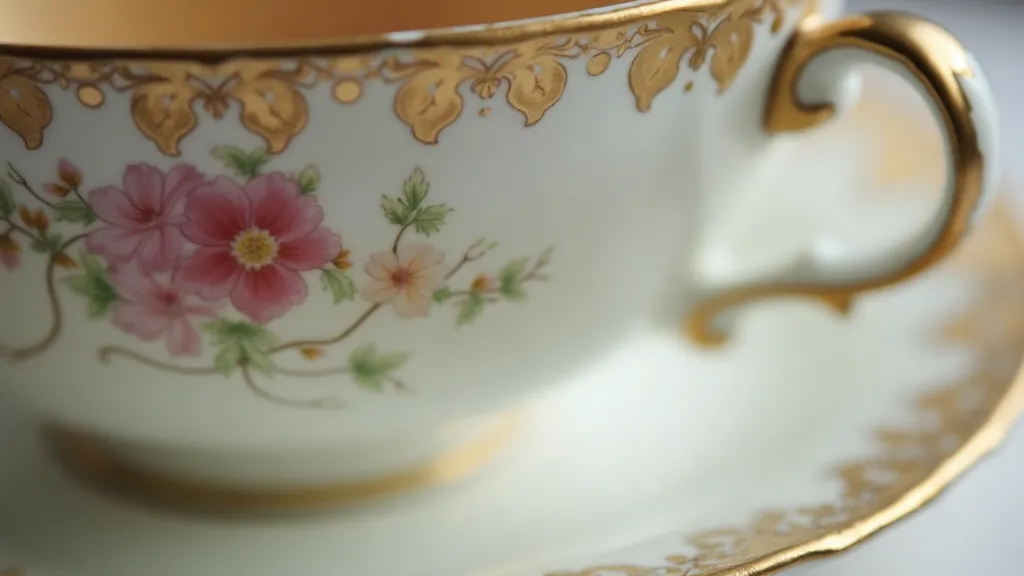
Gentle Cleaning Techniques
Harsh chemicals and abrasive scrubbers are the enemies of antique china. Here's a gentle approach to cleaning, designed to protect the delicate glaze and embellishments. Remember, preventative care is always best, minimizing the need for intensive cleaning.
- Hand Washing is Key: Never put your antique tea cups in the dishwasher! The heat, detergents, and agitation can cause irreparable damage. The harsh conditions simply aren't kind to vintage china.
- Warm Water and Mild Soap: Use warm (not hot) water and a very mild dish soap. Look for soaps specifically designed for delicate items, or even baby soap can be a good option.
- Soft Cloth or Sponge: Use a soft cloth or sponge to gently clean the surface. Avoid abrasive scrubbers that can scratch the glaze. Microfiber cloths are an excellent choice.
- Rinse Thoroughly: Rinse the tea cup meticulously under lukewarm water to remove all traces of soap. Residual soap can dull the glaze over time.
- Drying: Allow the tea cup to air dry on a soft towel. Avoid drying with a cloth as it can leave water spots or micro-scratches. A designated drying rack for delicate items is a helpful addition to your kitchen.
Dealing with Stubborn Stains
Stubborn tea or coffee stains are common, especially in older pieces. These stains can diminish the beauty and perceived value of your antique tea cups. Here are a few methods to try, always testing in an inconspicuous area first. Understanding the history and context of your piece can sometimes reveal why stains are prevalent—perhaps a particular brewing method was common during its era. If you’re intrigued by the stories behind these treasures, you might enjoy learning about rare tea cup patterns and the historical context they represent.
- Baking Soda Paste: Make a paste of baking soda and water. Gently rub it onto the stain with a soft cloth. Rinse thoroughly. This mild abrasive action can lift discoloration without being too harsh.
- Hydrogen Peroxide (with caution): Diluted hydrogen peroxide (3%) can sometimes lift stains. Test in an inconspicuous area first and rinse quickly. Use sparingly and with extreme caution, as it can affect the glaze.
- Lemon Juice: Lemon juice can help to brighten the glaze. Apply a small amount, let it sit for a few minutes, and rinse well. Be mindful of the impact on gold and silver trim (see below).
- Vinegar Soak: For stubborn water spots, a soak in diluted white vinegar (1 part vinegar to 10 parts water) for a short period can sometimes help. Rinse extremely well afterward.
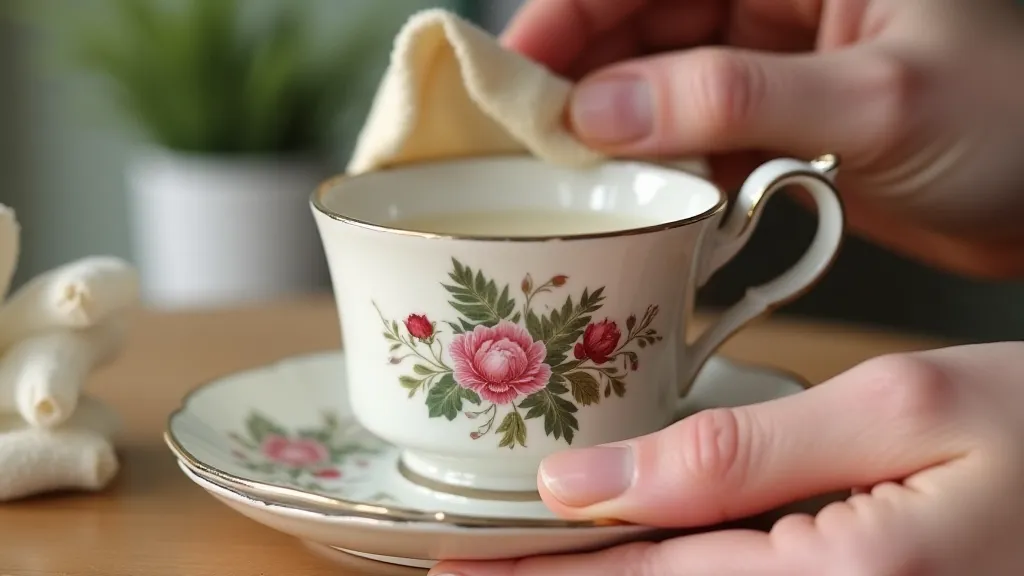
Safe Storage Practices
Proper storage is just as important as gentle cleaning. Follow these tips to protect your antique tea cups and preserve them for future generations. The environment in which you store your tea cups can significantly impact their longevity – fluctuations in temperature and humidity can cause cracking and damage.
- Wrap Individually: Wrap each tea cup individually in acid-free tissue paper or bubble wrap. This prevents scratches and protects against dust.
- Padding is Essential: Place a layer of padding (felt, foam, or bubble wrap) between each cup when stacking. This cushions against accidental bumps and prevents chipping.
- Stable Storage Location: Store your tea cups in a stable location away from direct sunlight and extreme temperatures. Avoid areas prone to vibrations, such as near speakers or appliances. A dedicated china cabinet is ideal.
- Dust Regularly: Dust your tea cups regularly with a soft cloth to prevent dust buildup. Dust can actually etch into the glaze over time.
- Humidity Control: If you live in a humid environment, consider using desiccant packets within your storage area to absorb excess moisture.
A Note on Gold and Silver Trim
Many antique tea cups feature gold or silver trim, adding to their beauty and elegance. These embellishments are particularly delicate and require extra care. The application of gold and silver trim was often a complex and painstaking process, reflecting the high value placed on craftsmanship during those eras. Avoid abrasive cleaning and never use anything acidic near the trim. If the trim is damaged, consult with a professional restorer. Attempting to repair damaged trim yourself can often cause further harm. The era in which these pieces were created frequently influenced their design and sentimentality, providing a fascinating glimpse into the past. If you are interested in how historical context influenced design, you may wish to explore the gilded cage: how Victorian sentimentality shaped antique tea cup design & value.
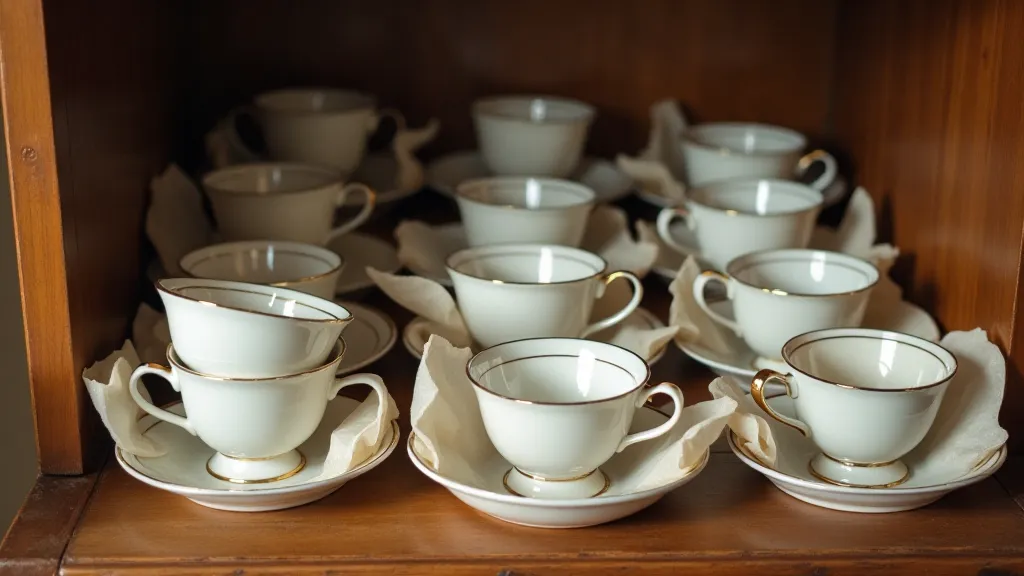
Worcester Tea Cups: A Special Case
Amongst antique tea cups, those produced by the renowned Worcester Porcelain company hold a place of particular significance. The history of Worcester porcelain is rich and complex, marked by periods of innovation and stylistic evolution. Identifying authentic Worcester tea cups can be a rewarding challenge for collectors. If you are specifically interested in these pieces, you might want to look into Worcester tea cups: history and identifying features.
Enjoy Your Treasures
Caring for your antique tea cups is an act of preservation, allowing you to appreciate their beauty and history for years to come. With a little care and attention, these delicate treasures can continue to bring joy and elegance to your life. Consider sharing your knowledge and passion with others, ensuring that the legacy of these beautiful objects continues for generations to come.
